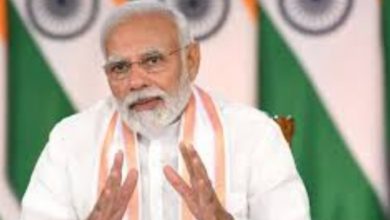Laptop to create, iPad to curate and phone to communicate: Nilekani recipe to stay focused

THE HUGE VALUATIONS seen over the last few years in the startup sector will likely go through a “compression” in the days to come as liquidity dries up and interest rates rise, said Nandan Nilekani, co-founder and non-executive chairman of Infosys.
“We are already seeing some value compression. As the US moves from an era of high liquidity and low interest rates to less liquidity and high interest rates, the value compression will happen. The future value discounting will be less,” he said at The Indian Express e-Adda on Friday.
In the long run, only the startups which have the right business performance, cash flow, earnings, and revenue — rather than those that have received big valuations — will be able to survive, he said.
The Express e-Adda is a series of informal interactions organised The Indian Express Group and features those at the centre of change. Nikelani was interacting with Anant Goenka, Executive Director, The Indian Express Group, and P Vaidyanathan Iyer, Executive Editor, National Affairs, The Indian Express.
Talking about ‘The Art of Bitfulness: Keeping Calm in The Digital World’, a new book co-authored with Tanuj Bhojwani of iSpirit Foundation, Nilekani said he is a big believer in technology for transformation, but it was important to use digital devices in a simpler way. The Infosys co-founder said he does not use social media, and that each of his devices were meant for a specific purpose.
“If you have one device and some 10 apps open and they are all sending you notifications all the time, then that is a recipe for not being able to focus… When we keep shifting from writing an email to seeing some notification, headline or forward, you are all over the place. The brain can’t deal with it. And each time you switch, you must again reposition your mind and that is very expensive to do,” Nikelani said.
When asked to walk the Express adda audience through his recipe for social media, Nilekani said, “Actually, I don’t use social media.” He said he had three devices for the three modes in which he works. “In the create mode to work and be focused without any dractions, I use a laptop with good lighting. For the curate mode to read or watch or just browse, I use an iPad; and for the communicate mode to talk to people through various channels, I use the phone.”
He said he does use twitter, but only for broadcast, not for any discussion.
During the interaction, Nilekani also said that the shape of technology and the tech world over the next ten years will likely be led new innovations in semiconductor design and manufacturing. With geo-political tensions on the rise, companies have moved towards a more diverse supply chain for these products.
“The consequence of global tensions is realising that these supply chains are actually fragile, and they (companies) have to do more to have less dependence on some of the countries. There is a lot of rewiring happening in global supply chains and semiconductors are a great example of what is happening,” Nilekani said.
Last December, the Cabinet had approved a Rs 76,000-crore plan for the semiconductor and display manufacturing ecosystem in the country. As a part of the plan, the Centre has lined up incentive support for companies engaged in silicon semiconductor fabs, display fabs, compound semiconductors, silicon photonics, sensor fabs, semiconductor packaging and semiconductor design.
As a part of the scheme, for setting up of silicon complementary metal oxide semiconductor, fabrication units that manufacture technology node of 28 nanometer (nm) or lower will get up to 50 per cent of the project cost as incentive, while for above 28 nm but up to 45 nm, the Centre will provide 40 per cent of the unit cost.
The government’s move to incentivise the setting up of semiconductor fabrication units assumes significance at a time when there is a global shortage of semiconductor products.
On Saturday, the Minry of Electronics and Information Technology said that it had received five applications for setting up of semiconductor fabrication and display fabrication units with a total investment commitment of $20.5 billion (Rs 1.53 lakh crore). While three applications have been received for setting up of semiconductor fabrication units, two have been received for setting up of display fabrication units.
Nilekani also said that it would be a good idea for the government to take more of home-grown innovations to other countries, apart from Unified Payment Interface (UPI), and the new innovations in health, which some countries in the neighbourhood have already started using.
“They also want this to go out. You are definitely seeing India and the Indian government promoting Indian digital public goods globally,” he said.





